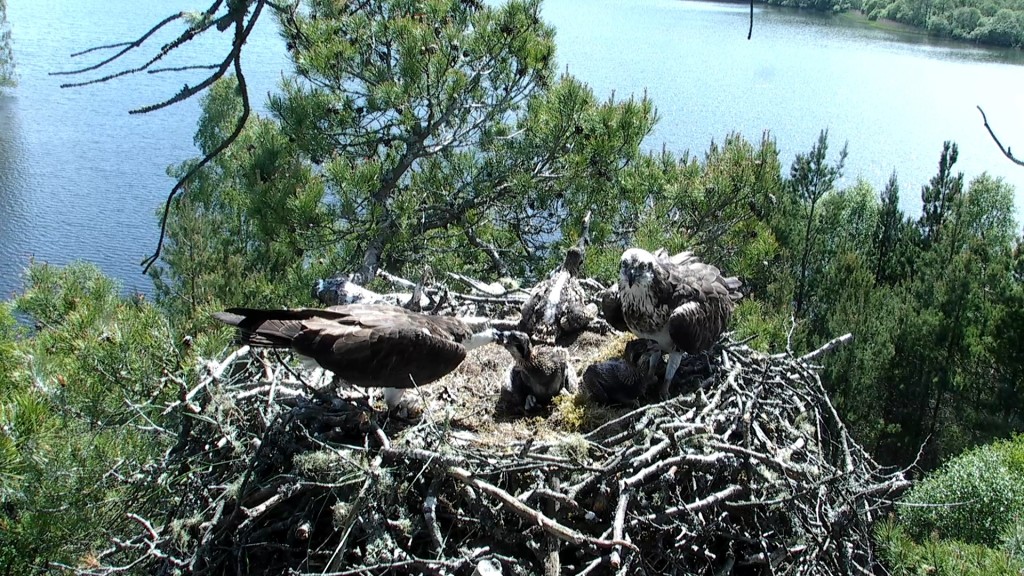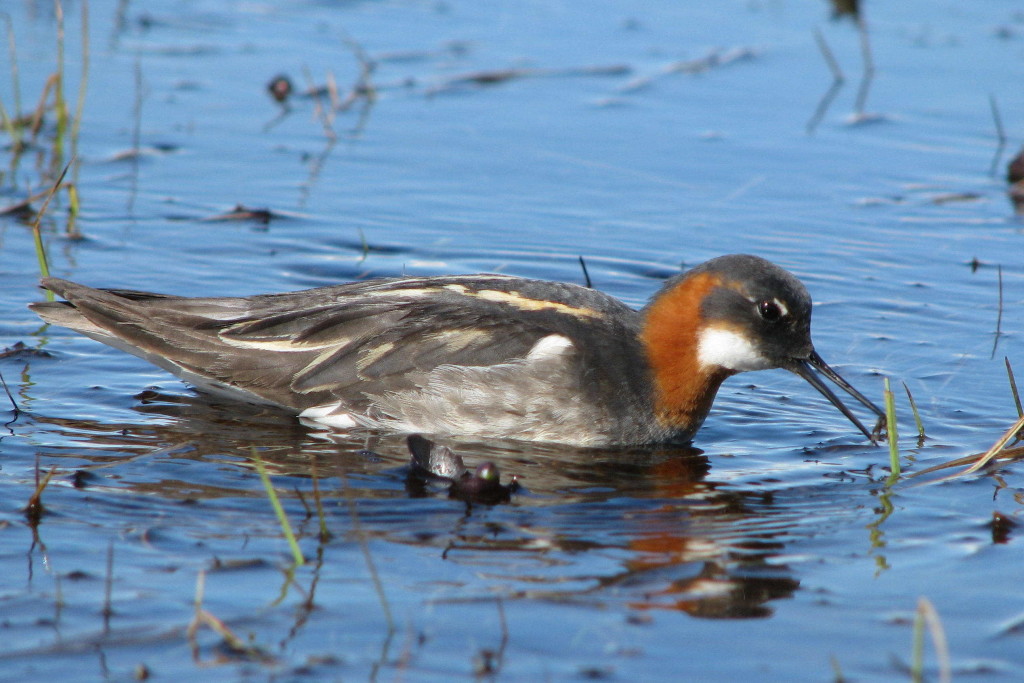News update 11th June: Ospreys, angry pheasants & phalaropes!
From freezing cold to sweltering hot, gale force winds to long still days when roe deer doze in pools of dappled sunshine – summer is arriving at Loch of the Lowes.
With fingers firmly crossed, we are delighted to say all three osprey chicks are thriving and being very well tended by their parents. The smallest, youngest chick is making up for time and holding its own in the (sometimes quite aggressive) sibling rivalry. The male osprey is continuing to take his ‘provider’ role very seriously and excels at catching plenty of fish and taking them up to the nest. As we have seen over the last few months, he also feeds the female and, even more unusually, was seen feeding the chicks this morning!

The feeding station outside the visitor centre’s viewing window is a hive of activity with tree creepers, yellow hammers, redpoll and great spotted woodpeckers adding to all the usual suspects. Red squirrels have been chasing each other up, down and around the trees, leaping through the heavy foliage in the highest branches to reappear again, racing, head first, back down to the feeders. Roe deer regularly come down to drink at the loch’s edge and recently a young roe doe has taken to grazing in the woodland behind the feeding station. This is the time of year when mallard ducklings and pheasant chicks seem to be cheeping and scurrying everywhere – be careful not to step on any of them!
An adventurous group of 14 tiny, fluffy pheasant chicks ventured through the back door of the centre the other day. Their mum was not impressed and, believing her brood to be in peril, she became pretty aggressive. Please bear in mind that should you come across chicks or young animals, the parents will be close by, so it is best to ‘leave well alone’ or you may find yourself the target of an angry and protective adult bird/animal.
On Monday (8th June) a stunning little bird was seen on the loch. It was positively identified as a Red-necked Phalarope, a rare and exciting sighting for Lowes. This individual may have stopped off on its migration from the Arabian Sea (where it over winters) towards its summer grounds in Iceland and the north. These dainty water-birds are very rarely spotted in Scotland and Western Europe, whereas, in Northern Baltic areas they can be seen in large flocks in late May. They feed on insects in open water, delicately picking them off the water’s surface whilst performing a peculiar spinning-top dance (see video here).
This is a great record for the reserve: the last Red-necked Phalarope in Perth and Kinross was spotted at Carsebreck in 2013 and is only the fourth record for the county since 2000.

Cherry
Visitor Centre Assistant
Help protect Scotland’s wildlife
Our work to save Scotland’s wildlife is made possible thanks to the generosity of our members and supporters.
Join today from just £4 a month to help protect the species you love.
Preface
From freezing cold to sweltering hot, gale force winds to long still days when roe deer doze in pools of dappled sunshine – summer is arriving at Loch of the …
